
How AI Can Help Speed Up The Green Energy Transition
| 99% | Mineral exploration projects that fail to become mines |
In medieval Germany, kobolds were mythical underground spirits that lived in caves and mines. These creatures also gave name to the key green metal, cobalt.
California-based KoBold, founded in 2018 and backed by Bill Gates, Jeff Bezos, Michael Bloomberg, Richard Branson and Ray Dalio, has been drilling at its Zambian permit for a little over a year. Zambia is Africa's second-largest copper producer.
KoBold has recently compared the Mingomba project's potential to that of the Kamoa-Kakula mine, developed by Ivanhoe Mines, and China's Zijin Mining Group in the Democratic Republic of Congo, which produced around 400,000 tonnes of copper last year and at full capacity it will be able to produce 620,000 tonnes annually. For comparison, the world's biggest copper mine Escondida produced more than a million tonnes of copper last year.
KoBold gathers data – including satellite imagery and drilling results, as well as old PDFs and hand painted maps on linen – and then uses AI technology to build out maps of the Earth's crust. These are used to search for potential deposits of metals needed for the green energy transition. Algorithms applied to the data collected determine the geological patterns that indicate a potential metals deposit. KoBold says its technology can locate resources that may have eluded more traditional geologists and can help decide where to acquire land and drill.
The company aims for its first output at the Zambian site by the early 2030s. It is currently completing resource estimate and pre-feasibility studies that will be key in deciding on whether or not to turn it into an operational mine.
Mingomba is not the only project KoBold is working on. The company is exploring more than 60 other areas in search for green energy materials, including in Australia, Canada and the US. Last year, it announced it had discovered deposits of lithium in South Korea, Australia, Namibia, Quebec and Nevada.
In South America, another AI-enabled mining exploration company, Boston-based VerAi, has tracked down ore containing copper, gold and silver in Chile and Peru. VerAi has trained its AI systems to search for minerals like lithium, cobalt, nickel, copper, zinc, gold, silver and molybdenum. VerAi develops models or profiles based on existing economic deposits, and then uses that library of profiles to search through datasets to identify locations with the same pattern that could have been missed by traditional exploration methods. Once drilling commences, the company's technology reportedly causes close to no environmental damage, minimising water waste and preventing soil contamination. VerAi claims it can shrink the exploration window from three to four years to two months, while cutting costs from $3-$5 million to $250,000.
AI helps Codelco boost copper volumesMeanwhile, Chile's copper miner Codelco is using AI to boost volumes at its mines that are among the world's largest and oldest. Extracting metal content from lower-grade ores requires more energy, applying upward pressure on extraction and processing costs and CO2 emissions.
Codelco is struggling to return production to pre-pandemic levels of about 1.7 million tonnes a year by the end of the decade from around 1.3 million tonnes last year, which marks the lowest level in a quarter century amid ageing assets and declining ore grade.
Codelco's copper output is the lowest in a quarter century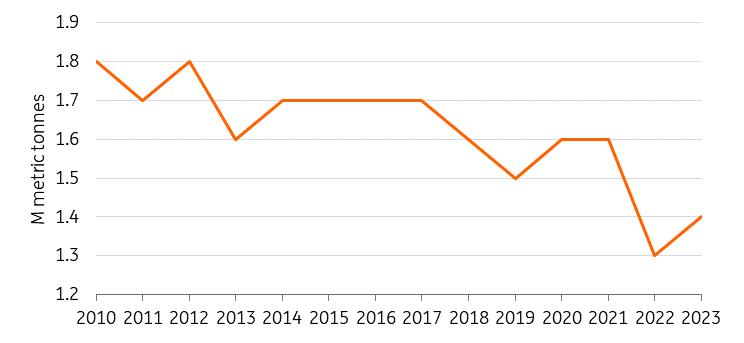
Source: Cochilco, Codelco, ING Research
Codelco introduced a digital data centre in 2020 that uses machine learning to combat dropping grades, rising expenses, and growing environmental concerns.
The Chilean miner said its AI platform is adding about 8,000 metric tonnes of copper, or $80 million in annual earnings, at its Chuquicamata mine – one of the largest open-pit copper mines that has been operating for over 100 years. The AI system uses a stream of data on extracted ore to enhance processing, for example, through the use of blending. Codelco is now looking to introduce AI systems at its other mines.
Also at Escondida, BHP teamed up with Microsoft last year to boost production from the world's largest copper mine using AI and machine learning. The use of digital technology is expected to improve copper recovery at the mine and generate more value from the existing resource. BHP uses real-time data from the copper concentrators in combination with AI-based recommendations from Microsoft's machine learning platform, which then gives plant operators the ability to adjust variables that affect ore processing and grade recovery.
AI adoption in mining will continue to growTo reach net zero targets, supply of critical metals needed for the energy transition will have to be ramped up rapidly to meet growing demand. Over time, we expect the adoption of AI to continue to grow in mining, with the application of new technologies rising within in the sector as companies strive to remain competitive.
In theory, AI technologies could help mining companies find and explore new sources faster to prevent future shortages – and with less damage on the environment and communities than the traditional mining methods.
For copper in particular, as ore grades decline at existing mines and fewer new copper deposit discoveries are made, technologies like AI, machine learning and data analytics could be used in the discovery and extraction processes to help meet the increasing demand for the metal that is critical in enabling a net-zero future. That is if investment in the sector grows and mining companies are willing to embrace new technology.

Legal Disclaimer:
MENAFN provides the information “as is” without warranty of any kind. We do not accept any responsibility or liability for the accuracy, content, images, videos, licenses, completeness, legality, or reliability of the information contained in this article. If you have any complaints or copyright issues related to this article, kindly contact the provider above.
Most popular stories
Market Research

- Manuka Honey Market Report 2024, Industry Growth, Size, Share, Top Compan...
- Modular Kitchen Market 2024, Industry Growth, Share, Size, Key Players An...
- Acrylamide Production Cost Analysis Report: A Comprehensive Assessment Of...
- Fish Sauce Market 2024, Industry Trends, Growth, Demand And Analysis Repo...
- Australia Foreign Exchange Market Size, Growth, Industry Demand And Forec...
- Cold Pressed Oil Market Trends 2024, Leading Companies Share, Size And Fo...
- Pasta Sauce Market 2024, Industry Growth, Share, Size, Key Players Analys...


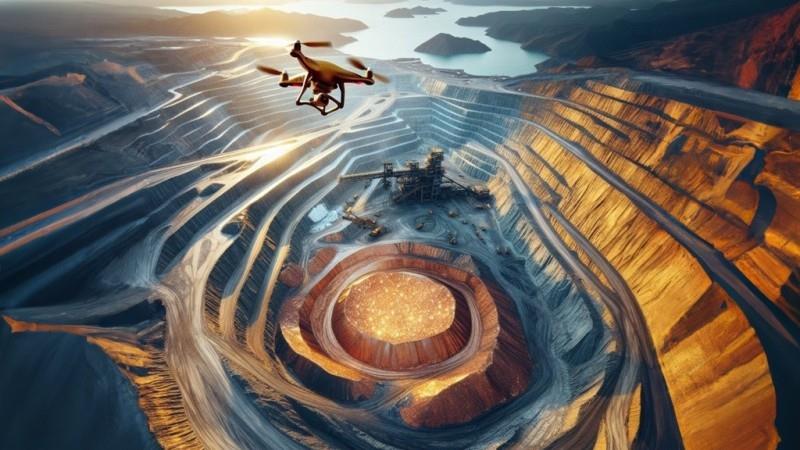
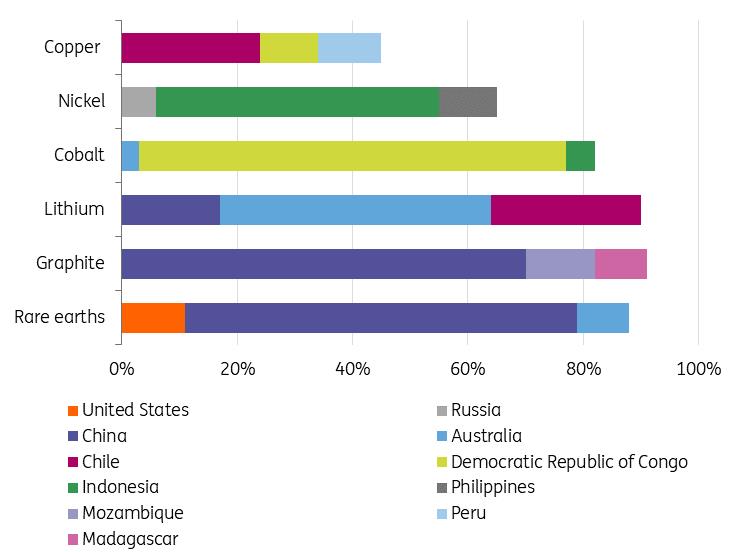
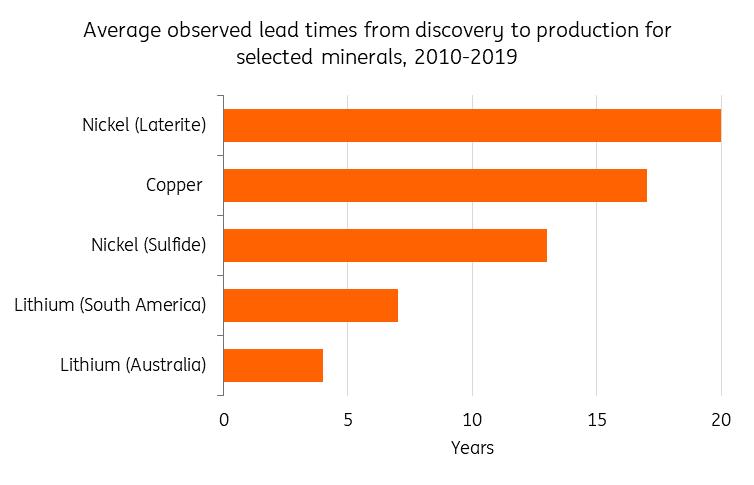
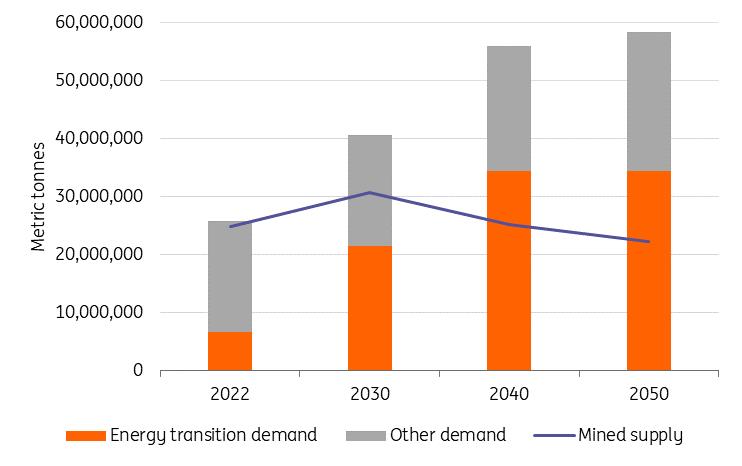


















Comments
No comment